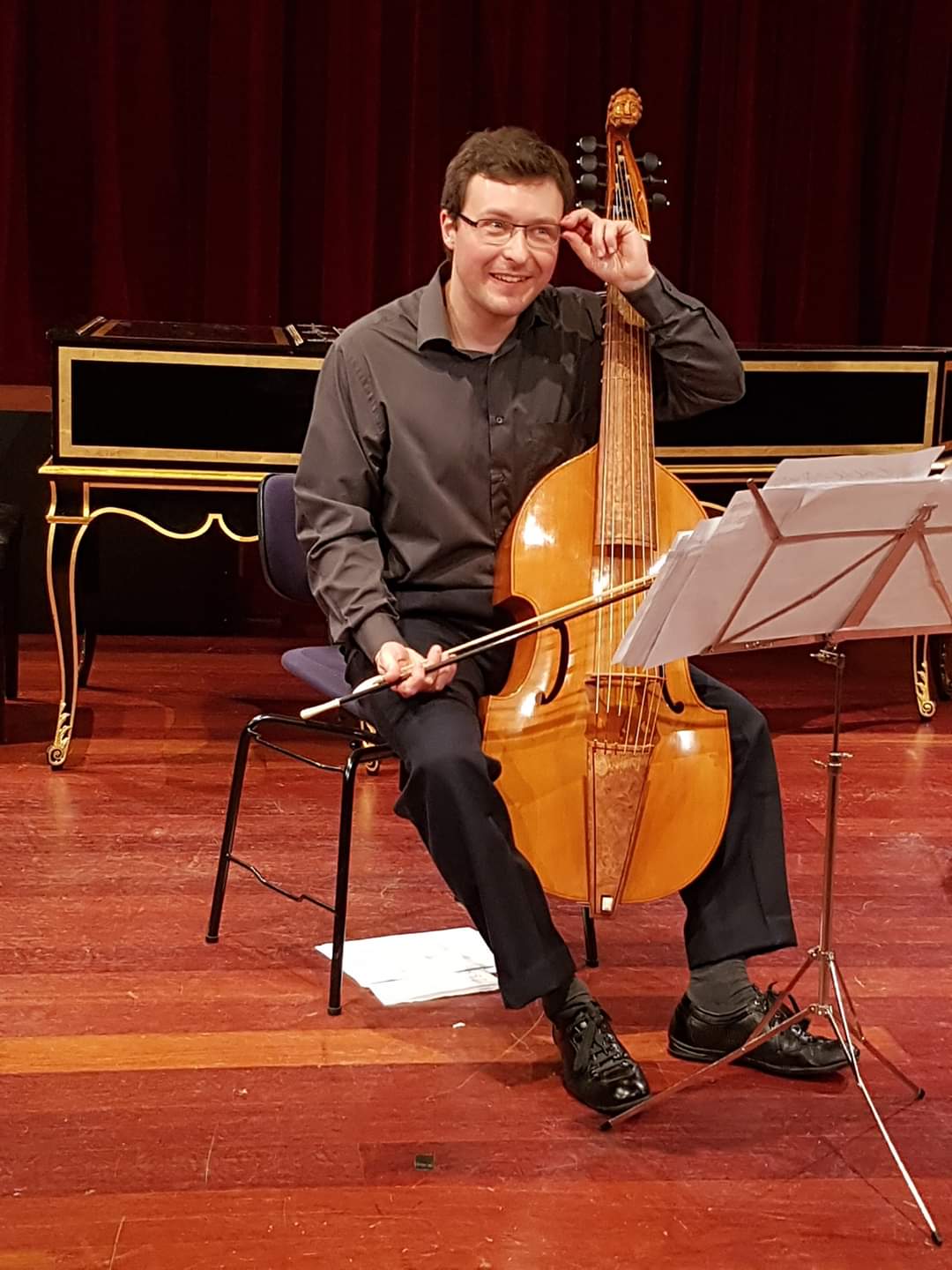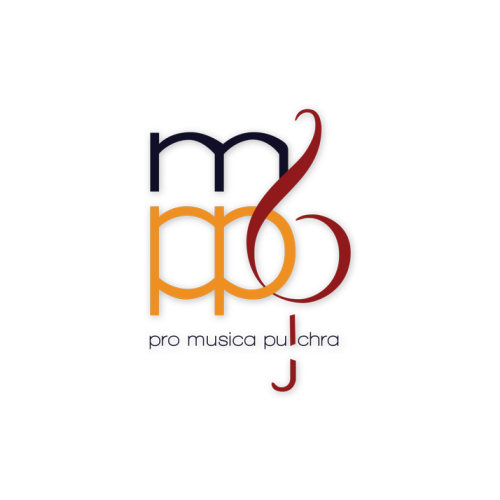PASCAL ORMANCEY, vièle and viola da gamba
Music from the 12th to the 18th century | Celtic music and improvisations
program | à télécharger, imprimer | download, print
Pascal Ormancey est né en 1983 et commence l'étude du violoncelle à l' âge de quatre ans et demi avec la méthode Susuki à l'académie de Berchem Ste-Agathe avec Sylvie Mariage. Il y fait tout le parcours musical. Sa famille aime les arts: son père Michel est artiste peintre, sa mère aime la danse et sa soeur le théâtre. Adolescent, il a aussi composé plusieurs morceaux pour un et deux instruments et s’est maintenant remis à la composition contemporaine pour instruments anciens afin de rechercher de nouveaux timbres et couleurs. Vers 17 ans, il se passionne pour la viole de gambe mais il devra attendre ses 23 ans avant d'avoir sa viole de gambe qu'il apprend d'abord en autodidacte, puis en cours privés ou masterclasses (avec: Francine Bergmans, Marion Middenway, Susie Napper, Vittorio Ghielmi, Philippe Pierlot, Vincent Dumestre ...). Ensuite, il s'intéresse au théorbe qu'il apprend aussi en autodidacte. Son nombre d'instruments n'a cessé de croître pour atteindre une douzaine d' instruments: violoncelles baroques à 4 et 5 cordes, basse et pardessus de violes, luths renaissance et baroque, archiluth, théorbe, guitare baroque, clavecin, harpe troubadour, cornemuse, vièle à archet... Son violoncelle date du milieu du 18e siècle. Il participe à de nombreux concerts auxquels on l'invite où qu'il organise avec ses amis dans des salles de concerts, des églises, des résidences du troisième âge, des expositions, etc. Il a donné régulièrement cours de musique ancienne au 'Séminaire d'instruments et musiques rares' de Farnières. Il y présenta en 2017 le luth baroque comme instrument rare.
Eclectique, il donne aussi des spectacles de prestidigitation et est candidat en langues et littératures classiques et licencié agrégé en langues et littératures germaniques. Son mémoire de fin d'études réunit d'ailleurs trois passions: le latin, l'anglais et la musique baroque. Il portait sur la relation musique/texte dans l'opéra 'Didon et Enée' de H. Purcell.
Pascal Ormancey werd geboren in 1983 en begon op vier en eenhalfjarige leeftijd cello te studeren met de Susuki-methode aan de academie van Sint-Agatha Berchem bij Sylvie Mariage. Hij doet daar de hele muzikale reis. Haar familie houdt van kunst: haar vader Michel is schilder, haar moeder houdt van dans en haar zus van theater. Als tiener componeerde hij ook verschillende stukken voor één en twee instrumenten en keerde hij nu terug naar de hedendaagse compositie voor oude instrumenten om nieuwe klankkleuren en kleuren te zoeken. Rond 17 ontwikkelde hij een passie voor de viola da gamba, maar hij moest wachten tot hij 23 was voordat hij zijn viola da gamba kreeg, die hij eerst leerde als autodidact, daarna in privélessen of masterclasses (met: Francine Bergmans, Marion Middenway, Susie Napper, Vittorio Ghielmi, Philippe Pierlot, Vincent Dumestre ...). Vervolgens is hij geïnteresseerd in het theorbo dat hij ook leert als autodidact. Het aantal instrumenten in zijn bezit wordt altijd groter tot een dozijn: barokcello's met 4 en 5 snaren, pardessus violen en violen, renaissance- en barokluiten, archilute, theorbe, barokgitaar, klavecimbel, bardischeharp, doedelzak, viool met strijkstok ... Zijn cello dateert uit het midden van de 18e eeuw. Hij neemt deel aan talrijke concerten op uitnodiging of georganiseert met zijn vrienden in concertzalen, kerken, bejaardentehuizen, tentoonstellingen, enz. Hij gaf regelmatig lessen oude muziek op 'Séminaire d'instruments et musiques rares' in Farnières. In 2017 presenteerde hij de barokke luit als een zeldzaam instrument.
Mariage. Hij doet daar de hele muzikale reis. Haar familie houdt van kunst: haar vader Michel is schilder, haar moeder houdt van dans en haar zus van theater. Als tiener componeerde hij ook verschillende stukken voor één en twee instrumenten en keerde hij nu terug naar de hedendaagse compositie voor oude instrumenten om nieuwe klankkleuren en kleuren te zoeken. Rond 17 ontwikkelde hij een passie voor de viola da gamba, maar hij moest wachten tot hij 23 was voordat hij zijn viola da gamba kreeg, die hij eerst leerde als autodidact, daarna in privélessen of masterclasses (met: Francine Bergmans, Marion Middenway, Susie Napper, Vittorio Ghielmi, Philippe Pierlot, Vincent Dumestre ...). Vervolgens is hij geïnteresseerd in het theorbo dat hij ook leert als autodidact. Het aantal instrumenten in zijn bezit wordt altijd groter tot een dozijn: barokcello's met 4 en 5 snaren, pardessus violen en violen, renaissance- en barokluiten, archilute, theorbe, barokgitaar, klavecimbel, bardischeharp, doedelzak, viool met strijkstok ... Zijn cello dateert uit het midden van de 18e eeuw. Hij neemt deel aan talrijke concerten op uitnodiging of georganiseert met zijn vrienden in concertzalen, kerken, bejaardentehuizen, tentoonstellingen, enz. Hij gaf regelmatig lessen oude muziek op 'Séminaire d'instruments et musiques rares' in Farnières. In 2017 presenteerde hij de barokke luit als een zeldzaam instrument.
Eclectisch, hij geeft ook tovervoorstellingen en is kandidaat in klassieke talen en literatuur. Hij heeft een licenciaat en aggregaatdiploma in Germaanse talen en literatuur. Zijn afstudeerthesis brengt ook drie passies samen: Latijnse, Engelse en barokmuziek. Centraal stond de muziek / tekst relatie in de opera 'Dido and Aeneas' van Henry Purcell.
Pascal Ormancey was born in 1983 and began studying the cello at the age of four and a half with the Susuki method at the academy of Berchem Ste-Agathe with Sylvie Mariage. He follows the whole musical journey there. Her family loves the arts: his father Michel is a painter, her mother loves dance and her sister theater. As a teenager, he also composed several pieces for one and two instruments and has now resumed contemporary composition for old instruments in search of new tones and colors. At around 17, he developed a passion for the viola da gamba but he had to wait until he was 23 before having his own, which he first learned by himself, then in private lessons or masterclasses (with: Francine Bergmans, Marion Middenway, Susie Napper, Vittorio Ghielmi, Philippe Pierlot, Vincent Dumestre ...). Then, he is interested in the theorbo which he also learns as an autodidact. His number of instruments has continued to grow to reach a dozen: baroque cellos with 4 and 5 strings, bass and pardessus de violes, renaissance and baroque lutes, archilute, theorbo, baroque guitar, harpsichord, troubadour harp, bagpipe, fiddle with bow ... His cello dates from the middle of the 18th century. He is invited to perform in numerous concerts or organizes some with his friends in concert halls, churches, senior citizens' residences, exhibitions, etc. He regularly gave early music lessons at the 'Seminary of rare instruments and musics' in Farnières where, in 2017, he presented the baroque lute as a rare instrument.
Eclectic, he also gives conjuring shows and is a candidate in classical languages and literatures as well as having an associate degree in Germanic languages and literatures. His final thesis also brings together three passions: Latin, English and baroque music. It focused on the music / text relationship in the opera 'Dido and Aeneas' by Henry Purcell.
